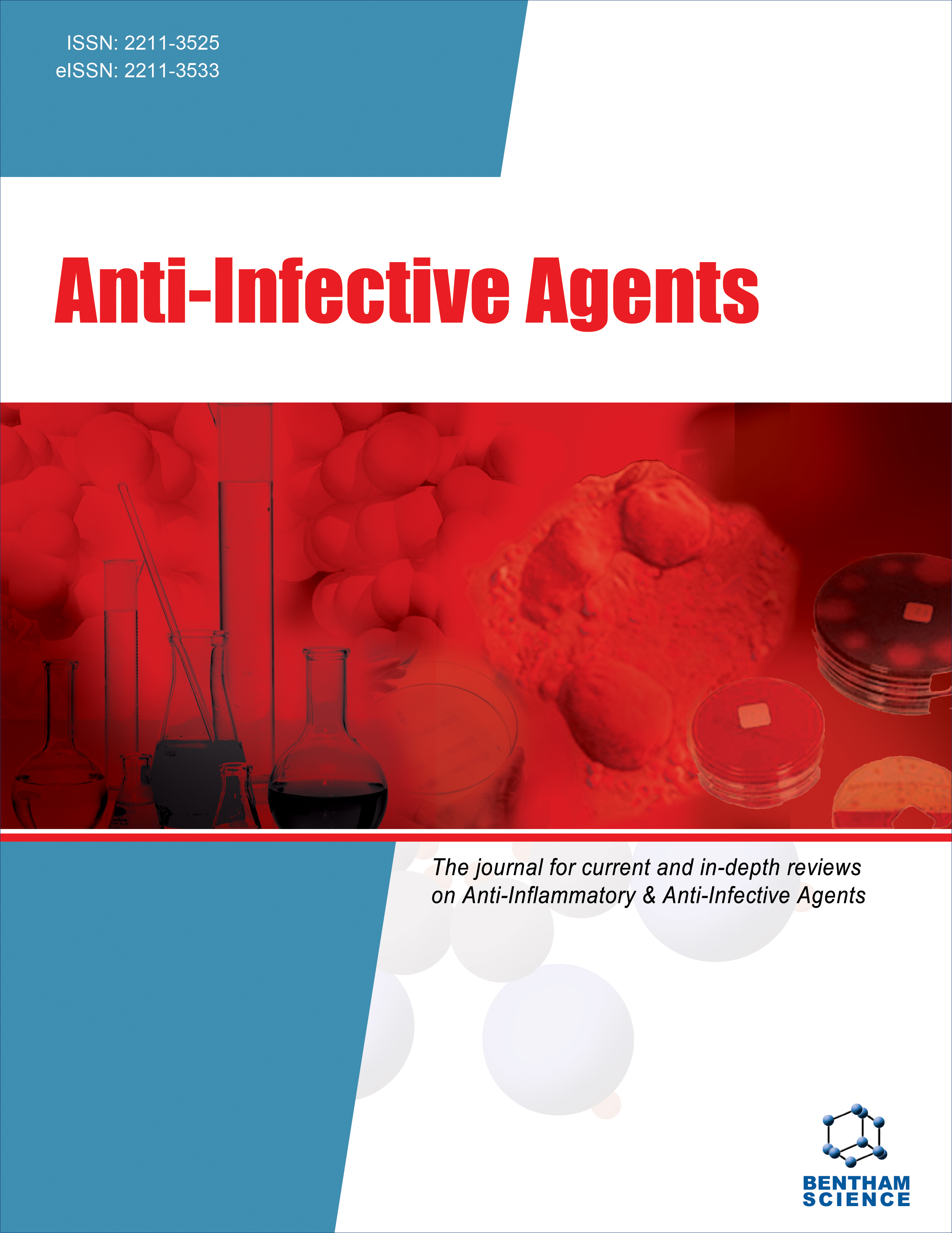-
s Syntheses, Characterization and Evaluation of Some 3-(benzothiazol-2-yl)-2-(4-substituted phenyl) thiazolidin-4-ones as Antimicrobial Agents
- Source: Anti-Infective Agents, Volume 16, Issue 1, Apr 2018, p. 32 - 39
-
- 01 Apr 2018
Abstract
Background: The increasing predominance of microbial resistance towards available antimicrobial drugs urges the need to develop novel antimicrobial agents that will be effective against resistant bacteria and fungi. Objective: A series of 3-(benzothiazol-2-yl)-2-(4-substituted phenyl) thiazolidin-4-one derivatives were synthesized as pharmacophore hybrid of benzothiazole and thiazolidin-4-one moieties as exclusive antimicrobial agents. Methods: Proposed compounds were synthesized by four step reactions. First three steps involved synthesis of phenylthiourea, benzothiazol-2-ylamine and Schiff's base srespectively. Finally, Schiff`s baseswere cyclized in the presence of thioglycolic acid to yield 4-thiazolidinone derivatives (2a-g), characterized by spectroscopic and elemental analysis. Resulted compounds were evaluated for their in vitro antimicrobial activities against four bacterial (Staphylococcus aureus, Bacillus subtilis, Escherichia coli and Pseudomonas aeruginosa) and two fungal (A. niger and P. crysogenum) strains using agar diffusion method. The minimum inhibitory concentrations (MIC) of the synthesized compounds were also determined by tube dilution method. Results: All the compounds displayed good to moderate antimicrobial activity. Compound 2d was found most potent against Bacillus subtilis (MIC25μg/ml), whereas compound 2e was most active (MIC 25μg/ml) against Staphylococcus aureus, Escherichia coli and Pseudomonas aeruginosa. Conclusion: The compounds having electron-withdrawing groups in the phenyl ring exhibited promising activity. A correlation between the antimicrobial activity and Log P was also established. Most active compounds can be considered as the potential antibacterial agents and deserve further investigation for their pharmacological and toxicological profiling.


